Tiger’s Nest Monastery, or Paro Taktsang, is unarguably the most iconic locations of the Kingdom of Bhutan. Even if you’re on a very tight schedule, chances are, you’ll have the Tiger’s next on your itinerary! And, all for god reason – the place is stunning.
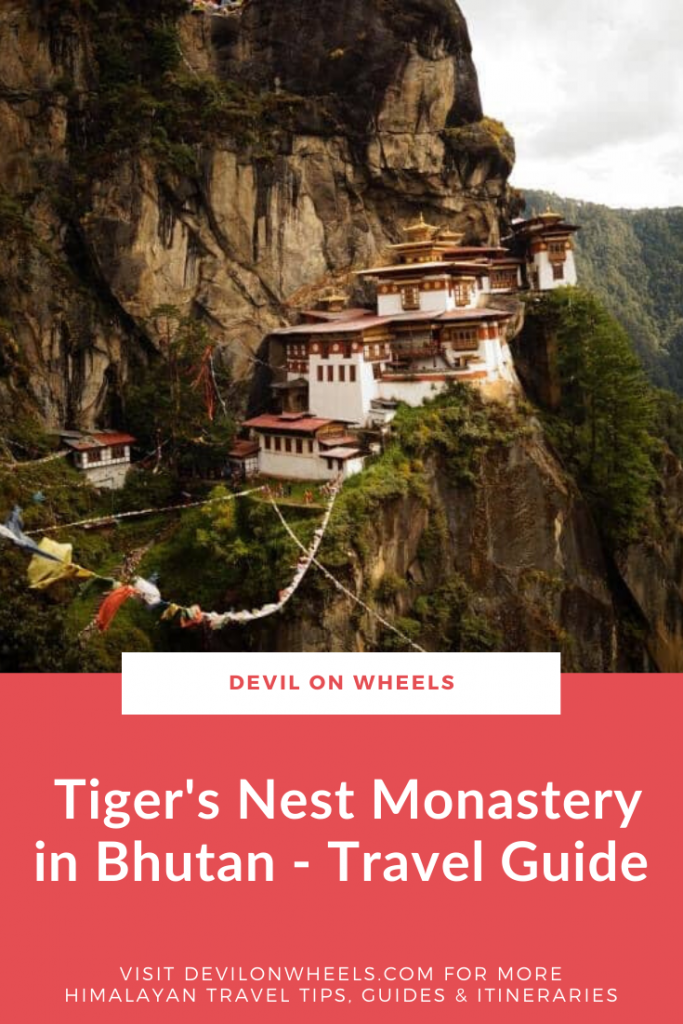
Tiger’s Nest is what its name denotes – a small collection of buildings precariously balanced on a cliff, 900 meters off of the ground. Without a doubt, a first time trip to Bhutan would not be complete without seeing the Tiger’s Nest. The location is stunning and definitely should be on your list of to-do’s when you visit Bhutan.
Let's quickly dive into the details:
What is the Tiger’s Nest Monastery?
A sacred Buddhist site located near Paro, Bhutan, Tiger’s Nest was built in 1692. It is situated around the cave where Guru Rinpoche first meditated. It is believed that through this meditation, the Guru was able to introduce Buddhism into Bhutan.
Now, this monastery consists of four temples with residential accommodations for the monks. Despite the daily visits by tourists, Paro Taktsang still functions as a monastery today.
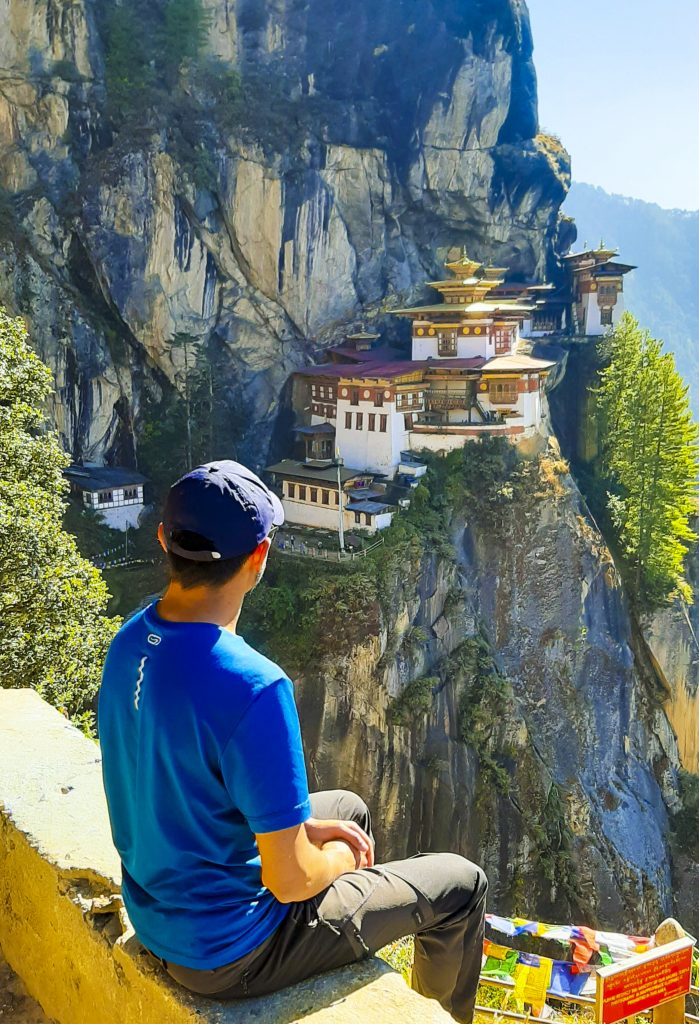
Geography
Taktsang Monastery, superbly recognized as Tiger’s Nest Monastery, is located in Paro, Bhutan. The monastery is one of the most acclaimed places of pilgrimage in the Himalayan region. Taktshang clings to the rock towering 800 meters above the valley and is located 2,950 meters above the sea level.
Pro Travel Tip: Do not forget to check this complete travel guide for traveling to Eastern Bhutan.
To reach the top, it will take you around 2 hours’ hike to reach the monastery from the road at Ramthangkha, situated about 12 kilometers from Paro town.
History
The history of this sacred place goes back to the eighth century. This place is when Padmasambhava, an extraordinary saint who founded the Mahayana school of Buddhism, visited the site. Here, he assumed the terrifying form of Guru Dorje Drolo and cleansed the place of evil spirits to preserve the integrity of Buddhist teachings.
At Paro Taktsang, the Guru revealed the Mandala of Pelchen Dorje Phurpa and delivered sublime teachings to his disciples. He spent four months in the cave, taming and subjugating the malicious spirits, and concealed profound treasures for the benefit of sentient beings.
Pro Travel Tip: Are you wonder how much will be the cost of Bhutan trip? Check our detailed guide on how to calculate the cost or budget of Bhutan trip?
The Legend
There is a legend that Guru Rinpoche was carried from Tibet to this location on the back of a tigress, thus giving it the name “Tiger’s Nest.” The legend of Taktshang (Tiger’s lair) grew from 747 AD when Guru Padmasambhava chose a cave on a sheer rock face to meditate.
And, taking a wrathful form, Guru Dorji Drolo, astride a tigress, subdued the evil spirits in the locality. Taktshang thus became one of the most important Buddhist monuments in the Himalayan Buddhist world.
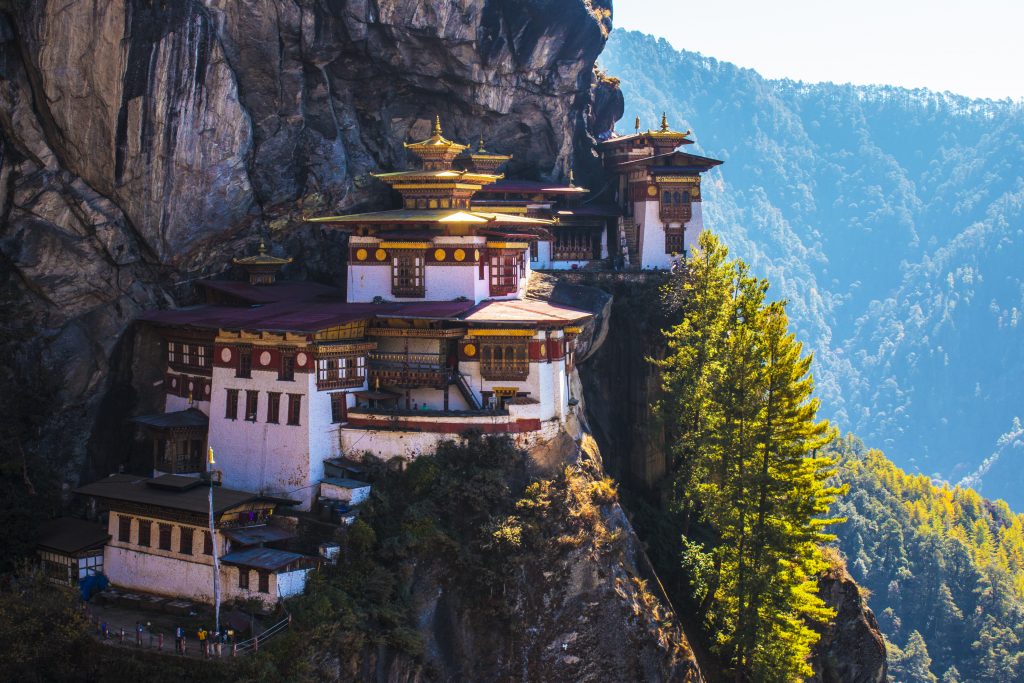
Tiger’s Lair
Then name “Taktshang” – accurately translating to the Tiger’s Lair was derived when local folks came across a tigress residing in one of the caves. Legend has it the tigress was Yeshi Tshogyal, a consort of Guru Rinpoche, who had transformed herself into the fearsome animal to vanquish spirits.
Pro Travel Tip: You can check this detailed guide on how to get all the necessary permits of Bhutan [2020 updates included].
The Founding
Sonam Gyaltshen built the first temple in the cluster – a Nyingma Buddhist master assumed to be in 1508 at Taktsang Pelphug. In 1645 the whole site was offered to Zhabdrung Ngawang Namgyel, the founder of the nation-state of Bhutan.
During the Tibetan war in 1644, a ritual was performed to invoke Padmasambhava and the protective deities. The Zhabdrung instructed Gyalsey Tenzin Rabgye, who subsequently became the fourth temporal ruler of Bhutan, to build the temple of the Eight Manifestations of the Guru there. The work began on the 10th month of the Water-Monkey Year (1692), and the two-storied temple was completed in 1694.
Between 1961 and 1965, the monastery was renovated by the 34th Je Khenpo, Shedrup Yoezer. Additions were made in 1861-65 and 1982-83, and then in 1992. On April 19, 1998, Taktshang was damaged in a tragic blaze. It was restored to its original glory by His Majesty Jigme Singye Wangchuck, the Fourth King of Bhutan.
Pro Travel Tip: Do not forget to check this complete travel guide for traveling to Central Bhutan.
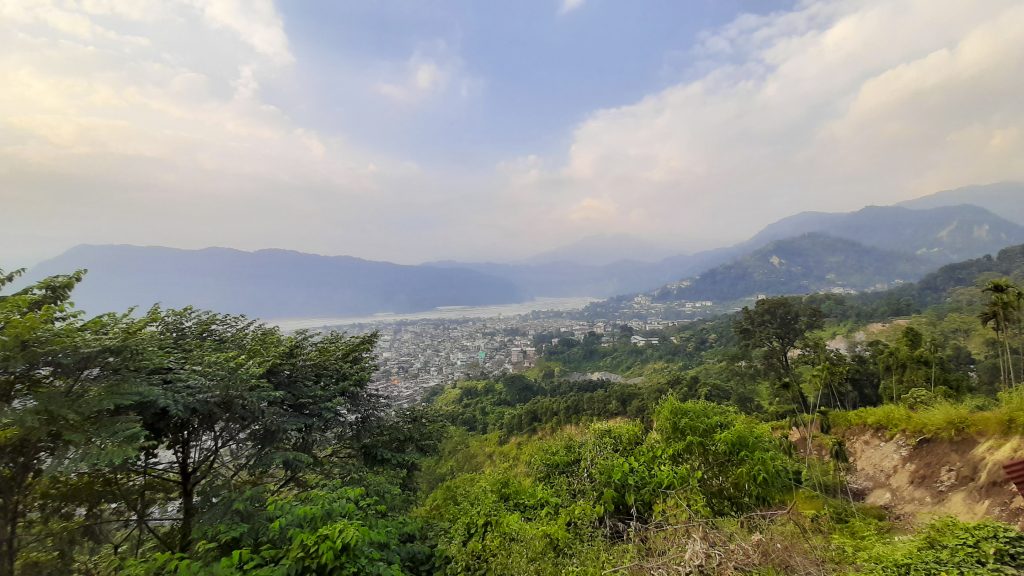
Facts About the Hike
Distance: 4 miles round trip
Elevation Gain: 1,700 feet
Highest Elevation: 10,232 feet
Time: Allow 5 to 7 hours for the entire visit
Distance
Overall, the climb to the monastery will take you around 3 hours maximum at a comfortable stride. However, if you’re especially fit – you might be able to complete it in about 2 hours total. You’ll be climbing 4 km one way and gain around 700 meters in terms of the elevation.
Getting Here
The Tiger’s Nest Monastery is located 20 minutes from Paro by a private cab. Thus, Paro will be the perfect home base for your hike. While most people visiting Bhutan can do so on an organized tour – it would probably be included in your itinerary.
However, Indians, Bangladeshis, and Maldives residents can customize their travel and make their plans. Keep in mind that this activity will take an entire day, and thus, you should not be planning a lot of other activities for the day.
You should ideally plan to leave Paro by 8 AM, if not earlier, to make the most of your journey. Leaving early in the morning will also ensure that too many tourists do not bombard you along the way. If you go by 8 – you can reach back to your hotel by 4 PM. However, I suggest you spend a lot of time at the top. There is a cafeteria not far from the monastery where you can relax and eat delicious local delicacies.
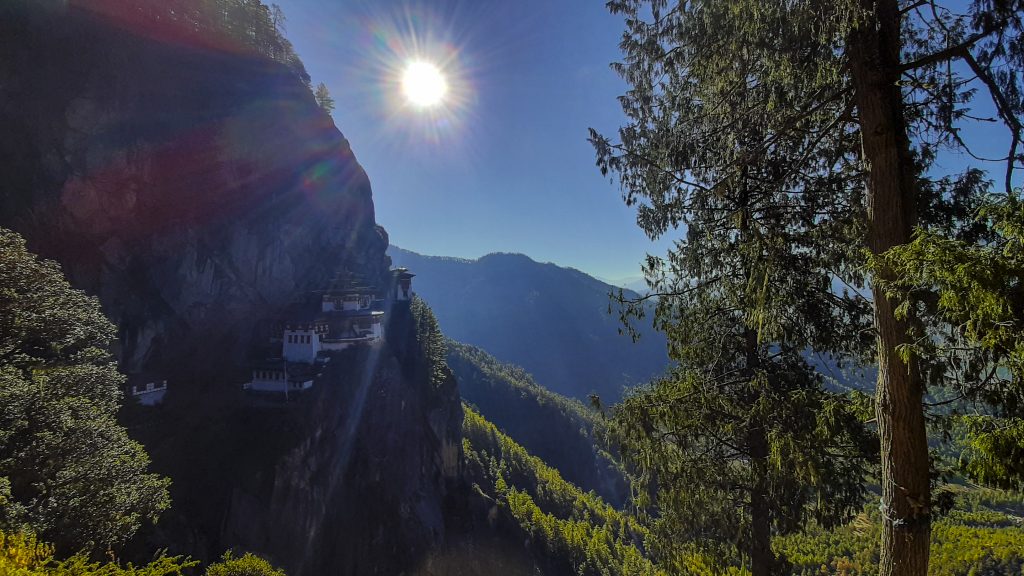
Hiking to the Tiger’s Nest Monastery
The only way to reach the top and visit the monastery is by a hike. Thanks to its unique location, no roads are leading up to the place. However, if you want to visit and are not fit enough – horses are available to carry you most of the way.
Getting to the Monastery
When you drive from Paro, for about 20 minutes later – you’ll reach the bottom of the mountain, where there’s a car parking lot. From here, you’ll start your hike. There are a bunch of little shops selling souvenirs as well as necessities such as hiking poles etc. If needed, and you’re not interested in hiking the entire route – you’ll also need to hire your horses here.
The parking lot is covered with trees, and immediately upon clearing the jungle of trees- you’ll spot your stunning destination – Tiger’s Nest, perched atop a Himalayan cliff. You’ll be mesmerized with the first look and wouldn’t want to skip a beat to be there as soon as humanly possible. I truly believe the first glance pumps you up so fast to get to the valley floor!
The trail is relatively easy to conquer. It is a broad, dirt trail and is mostly an ascend the entire way up. However, keep in mind, you don’t have to overdo it and just remember to take your time, take as many stops as required – no shame in that!
Pro Travel Tip: Do not forget to check this complete travel guide for traveling to Western Bhutan.

Halway Mark to the Tiger’s Nest Monastery
A cafeteria will mark your halfway to the monastery. The hike to the cafeteria will take you around an hour to two, depending upon your fitness levels. Along the way, you will pass the most scenic prayer flags flung by fellow devotees! The views keep getting prettier and crisper the higher up you move, and the scenery around you will also be pretty stunning!
Right around the halfway mark, you’ll get some respite as the trail levels out. There are a bunch of prayer wheels near the Taktsang Cafeteria, and I urge you to spend some time here – take in the peace and tranquility of the moment before you start your final push towards the top. Some people just come up to this mark and return as the views of the monastery are pretty stunning!
Pro Travel Tip: If you prefer traveling solo, this article will help you plan a solo trip to Bhutan.
But, do know that the second half of the climb is relatively more comfortable. The trail is not as steep and gets less monotonous, especially as you near the monastery. In my opinion, the best view of the hike is at the point where you overlook the monastery. It is also the place of the iconic photo you can see across the internet of the monastery.
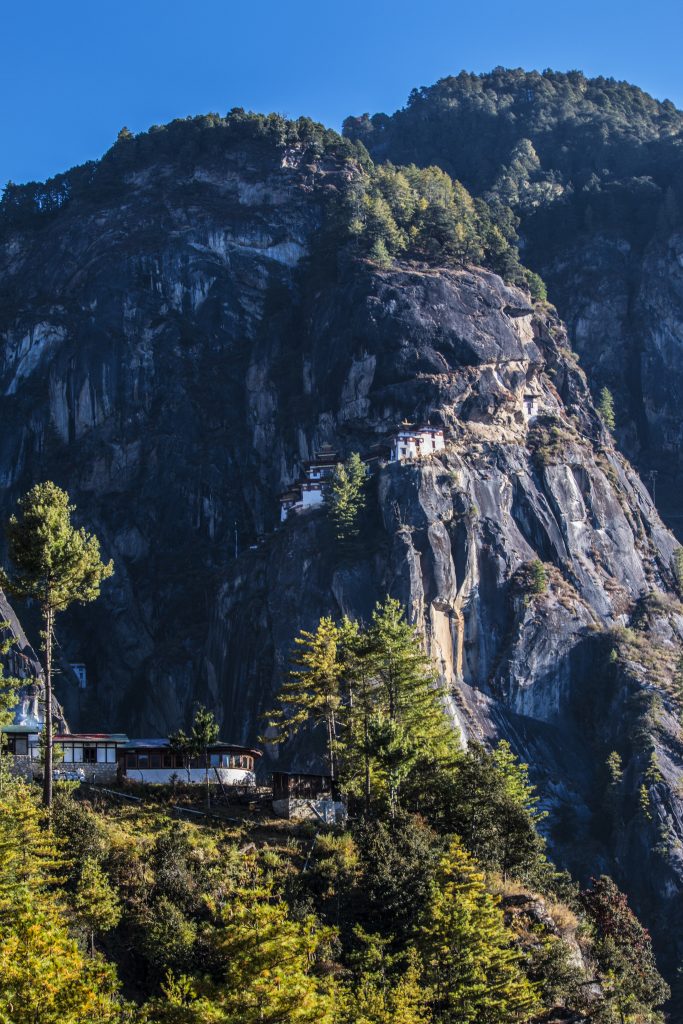
Reaching the top
From this point on, you’ll be walking down a stone staircase. After crossing a bridge covered in prayer flags, you’ll have to make a slightly strenuous climb up to the monastery.
Once at the Tiger’s Nest Monastery, your guide will take you on a tour of the temples. Backpacks, photography equipment, and shoes are not allowed inside the monastery. These you will need to leave with security staff located just outside of the monastery walls.
After your tour of the Tiger’s Nest, you will hike back the way you came.
Pro Travel Tip: Check our article about important tips for saving costs on the Bhutan trip, if you are looking to make a budget trip.
Frequently Asked Questions
What is the best time to visit the Tiger’s Nest?
October to December is the best time to visit Bhutan when the weather is clear and crisp. The weather remains precise through the winter, although it can get quite cold during this time. I believe that to make the best of your journey and to enjoy the Tiger’s Nest hike indeed – you should visit when the weather is milder and gentler. The spring season can also be an excellent time to visit Bhutan. Things begin to heat up in May, and from June through September, the monsoon arrives.
What is the best time for Photography at the Tiger’s Nest?
As with most places, the best lighting is around mid-day as well as right before sunset, aka the golden hour! The monastery tends to remain in the shadow of the mountain until around 11 AM. Getting here early in the morning helps to avoid some of the crowds, but you will still need to wait until midday for the best photographs.
What are the fitness levels required for this trek?
Anyone, with average fitness, can complete the hike – through the time it takes, you might vary. Remember to take your time – this is not a race. Do remember to take a ton of breaks on your journey up above as it will provide you with a lot of time to soak it all in and truly immerse yourself in the experience you’re partaking in. Also, if you think you might need help – remember to take hiking poles with you as this will help your knees immensely, especially when you’re descending.
What should I carry for the trek?
Here’s an essential list of things you will require – Hiking shoes, lots of water, a few snacks, and your camera. You can buy lunch or tea at the cafeteria.
Can kids do the trek?
Yes, children can do this trek quite easily. The trail is a slow, steady climb that most kids seven and older should be able to handle.
Pro Travel Tip: If you are interested in exploring the wildlife in Bhutan, then please check our detailed guide on Bhutan Wildlife Sanctuaries and National Parks.
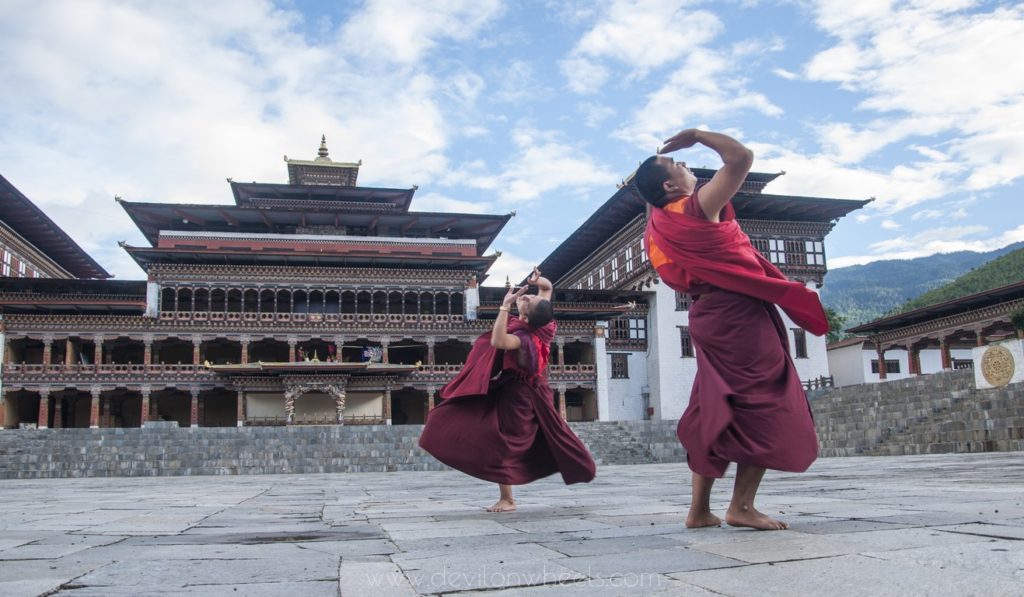
Conclusion
If you’ve ever thought of heading to Bhutan, Tiger’s Nest Monastery will be on your list. Everything and anything you need to know, this travel guide covers it all.
Have a travel question?? You can subscribe to my YouTube channel and leave a comment to ask your travel questions about traveling to the Himalayas.
However, if you have any questions, do let me know and I can share more info! This place is truly an iconic location and rightfully so. Do visit and share your experiences with us!






